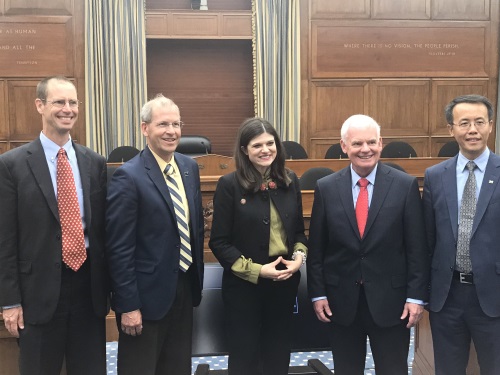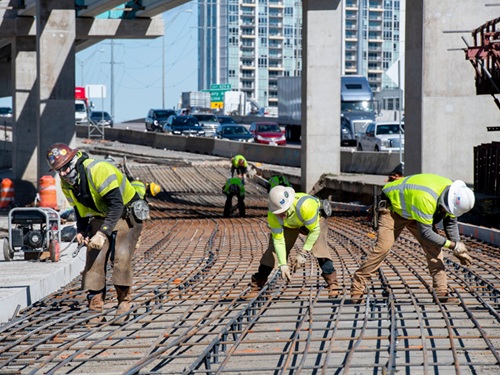Cutting the cost of highway concrete by 90 percent, even while boosting its strength and longevity; using carbon-fiber reinforcement in bridges to reduce the corrosive impact of snow- and ice-melting chemicals; and constructing a 32-acre testing facility to experiment with connected and automated vehicle (CAV) technologies.
Those are just some of the many benefits ultimately generated by federal transportation research funding – benefits that would only be increased with more federal investment, argued state department of transportation executives during a House of Representatives Science, Space, and Technology subcommittee hearing on July 11.

“For example, the state of Indiana spent $3.9 million on research projects in 2017 and they report that five of those research projects saved the state just under $190 million,” explained Brian Ness, director of the Idaho Transportation Department, in his written testimony before the subcommittee on research and technology. “What a great return on investment, saving 46 dollars for every one dollar spent on research!”
He added that the ITD used federal research dollars to help develop a new concrete mix called High Early Strength Concrete for use in accelerated bridge construction to link bridge girders then tested it in partnership with a state university. “That study proved the new mix can replace Ultra-High Performance Concrete, which costs $10,000 to $15,000 per cubic yard, and reduce the cost to $800 per cubic yard –a cost reduction of more than 90 percent,” he emphasized.
Those are the kinds of developments Rep. Haley Stevens, D-Mich., the subcommittee’s chairwoman, hopes to foster by increasing federal transportation research and development funding.

“Investing in research and development is critical to developing smart, resilient, and cost-effective transportation infrastructure for the future,” she said in her opening statement. “We want to ensure that transportation researchers with good ideas are able to get funding from USDOT to pursue those ideas. We must also ensure that federally-funded research that does lead to promising innovations finds its way into practice.”
Timothy Henkel, assistant commissioner for the Minnesota Department of Transportation, noted in his testimony that beefing up funding for the Federal Highway Administration’s Exploratory Advanced Research or EAR program is one way to accomplish that goal.

“FHWA has a good program but its funding level – just $6 million annually – is rather low,” he explained. “Universities ought to be the best sources for carrying out fundamental research, but matching requirements and program directives seeking near-term solutions appear to be resulting in a preponderance of applied research that is crowding out fundamental research.”
Henkel added that there is also “little investment in evaluation research that can help program managers and policy makers understand how well research, development, and technology transfer (RD&T) programs are working at fostering innovation and how effective the innovations have been once implemented.”
ITD’s Ness emphasized that point, noting that estimating the value of research products “is challenging” as a research product can have multiple outcomes, which in turn can lead to multiple impacts.

That’s why he said retaining the current multi-tiered federal research and implementation program within ongoing surface transportation funding reauthorization efforts is critical to making such continued improvements to the nation’s mobility networks.
“By coordinating, collaborating, pooling and leveraging time and money, and utilizing the combined knowledge and expertise of our diverse research community, we are making significant contributions and improvements to the advancement of our nation’s transportation system,” Ness explained.
“This decentralized organization of research programs has served the nation well, and should be maintained in the next surface transportation authorization,” he said.



